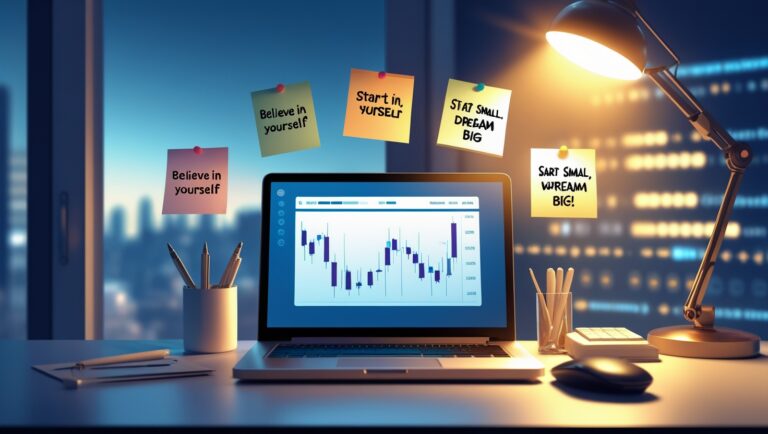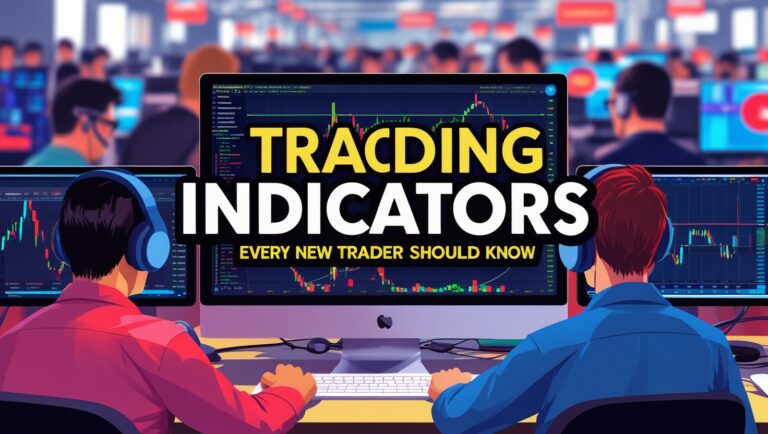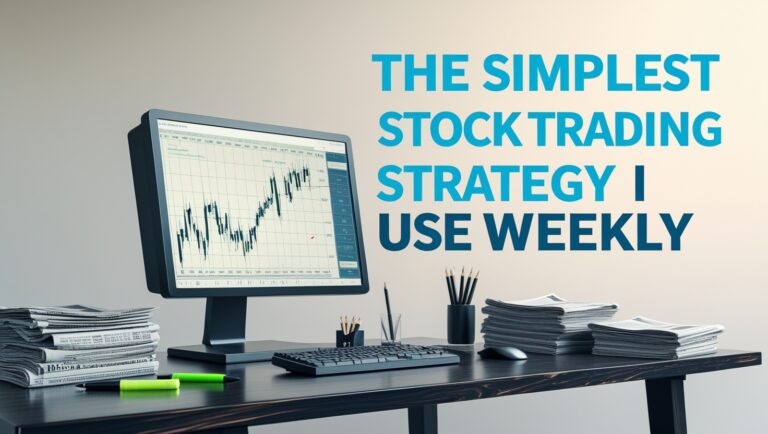The Psychology of Trading: How to Control Emotions and Stick to Your Plan
The Psychology of Trading: How to Control Emotions and Stick to Your Plan
Trading isn’t just about charts, patterns, and numbers—it’s also a mental game. Your ability to control emotions can often determine whether you succeed or fail in the markets. I’ve learned that discipline, mindset, and self-awareness are just as important as technical analysis when it comes to consistent profits.
In this guide, I’ll walk you through the emotional traps traders face, and how to stick to your trading plan no matter what the market throws at you.

Table of Contents
Why Trading Psychology Is So Important
You could have the best trading strategy in the world, but without emotional control, you might still lose money. Fear, greed, and impatience can cause traders to abandon their plans and make impulsive decisions. I’ve seen it happen to myself and countless others—solid trades turn into losses because we let our feelings take over.
Recognizing Emotional Triggers in Trading
The first step to controlling emotions is identifying your triggers. For me, one of the biggest triggers was watching a trade move against me right after entry. This often made me exit too early, only to watch the price reverse and hit my original target. By becoming aware of these tendencies, I started creating rules to counter them.
Building and Following a Solid Trading Plan
A trading plan should outline your entry criteria, risk per trade, profit targets, and exit rules. Once written, it becomes your guide—your “contract” with yourself. The key is to follow it without hesitation. I now review my plan before every session, which helps me stay objective and avoid emotional decisions.
Using Tools to Stay Disciplined
One way I reduce emotional trading is by using alerts and automated tools. These help me act only when my setups trigger, instead of staring at charts and overthinking. If you want a reliable charting platform that makes it easier to follow your plan, click here to the best platform I use daily: Click here to TradingView.
Managing Fear and Greed
Fear often makes traders cut winners short, while greed pushes them to hold losers too long. The solution is risk management—knowing exactly how much you’re willing to lose on a trade, and taking profits at pre-set levels. This removes emotion from the equation.
Practicing Patience
Not every day will offer a great trade setup, and that’s okay. I used to feel like I had to trade daily to be “productive,” but that only led to bad trades. Waiting for high-probability setups has been one of the hardest but most rewarding habits I’ve developed.
Learning from Your Mistakes Without Emotional Baggage
Every trader makes mistakes—it’s part of the process. The difference between successful and struggling traders is how they handle them. I record every trade in my journal and review them weekly to learn, rather than dwell on the losses.
Combining Psychology With Strategy
Mastering the mental side of trading only works if you have a strategy that you trust. The method I use has allowed me to create consistent income and even pay my bills monthly with stocks—you can learn it here: How I Pay My Bills Monthly With Stocks.
Final Thoughts
Your mindset will shape your trading journey as much as your strategy. By controlling your emotions, sticking to your plan, and trusting your tools, you give yourself the best chance at long-term success.
Understanding the Role of Emotional Bias in Trading
One of the hidden challenges in trading is emotional bias—the tendency to interpret market data in a way that confirms your existing beliefs. For example, if you believe a stock will rise, you might only look for bullish signals and ignore warning signs. I had to train myself to question my bias every time I reviewed a chart, making sure I evaluated both bullish and bearish possibilities before committing to a trade.
Why Overtrading Can Destroy Your Confidence
Overtrading is one of the most common mistakes new traders make, and it’s usually rooted in emotional impulses rather than strategy. I used to think more trades meant more opportunities to make money, but the opposite happened—I increased my risk exposure and burned out faster. By limiting myself to a set number of trades per day, I reduced stress and improved the quality of my decision-making.
The Power of Pre-Market Preparation
A calm and prepared mind makes better decisions. Every morning, I dedicate time to reviewing market news, identifying key levels, and setting alerts. This routine reduces uncertainty during the trading day and keeps my emotions in check because I already have a clear plan before the market opens.
How Loss Aversion Shapes Trading Decisions
Loss aversion—the fear of losing—can make traders hold onto bad trades or exit good ones too early. I learned to combat this by defining my stop loss before entering any trade and accepting the potential loss as the cost of doing business. This shift in mindset freed me from second-guessing my trades mid-action.
The Role of Self-Talk in Trading Success
What you say to yourself while trading matters. Negative self-talk (“I always lose,” “I’m terrible at this”) can erode your confidence, while positive affirmations help you stay focused. Before trading sessions, I remind myself: “I follow my plan. I trade with discipline. I wait for my setups.” This simple shift has kept me from sabotaging my trades due to fear or doubt.
Building Emotional Resilience Through Small Wins
You don’t need to hit massive home runs to be a successful trader. In fact, aiming for small, consistent wins builds emotional resilience and keeps you from taking unnecessary risks. When I focus on compounding small profits, I’m less emotionally attached to each trade, which leads to better decision-making overall.
How to Avoid Revenge Trading
Revenge trading happens when you try to “win back” losses by jumping into new trades without proper setups. This is one of the most dangerous emotional traps in trading. The best way I found to stop it? Taking a break after a loss, reviewing what went wrong, and waiting until I see my next high-probability trade before getting back in.
Using Trading Journals to Manage Emotions
Keeping a trading journal is one of the most powerful ways to track both your performance and your emotional state. I not only record my entry and exit points but also how I felt before, during, and after each trade. Over time, I began to notice patterns in my emotional behavior, allowing me to make targeted improvements.
Why Patience Pays More Than Aggression in Trading
When I first started, I thought aggressive trading would help me grow my account faster. The reality? It drained my account quickly. Patience—waiting for setups that match my criteria perfectly—has consistently produced better results. The markets reward patience far more than they reward speed.
The Link Between Lifestyle and Trading Psychology
Your trading mindset doesn’t exist in a vacuum—it’s influenced by your lifestyle. Poor sleep, unhealthy eating, and high stress outside of trading all spill over into your decision-making. I’ve found that improving my overall lifestyle has directly improved my trading discipline and clarity.
How Risk Management Supports Emotional Control
Risk management is not just about protecting your account—it’s about protecting your mind. Knowing that I never risk more than a small percentage of my account on any trade keeps me calm, even when a trade moves against me. This prevents panic-selling or holding onto losers too long.
The Importance of Time Away From Charts
Sometimes the best way to control your emotions is to step away from your trading desk entirely. Constantly staring at charts can lead to overanalysis and impulsive trades. I schedule specific chart-check times during the day, letting alerts notify me when something important happens, so I’m not glued to the screen.
Practicing Mindfulness Before and During Trading
Mindfulness techniques—like deep breathing and short meditations—help me stay grounded in the moment. By calming my mind before placing trades, I’m better able to stick to my plan and avoid emotional reactions to sudden price movements.
Turning Emotional Setbacks Into Growth Opportunities
Instead of seeing emotional slip-ups as failures, I now treat them as valuable lessons. Each time I deviate from my plan, I write down what happened, why it happened, and how I can prevent it next time. This process transforms mistakes into a source of growth rather than frustration.
Combining the Right Tools With the Right Mindset
Even the best mental strategies work better when supported by reliable tools. That’s why I use a professional charting platform that lets me set alerts, track multiple markets, and reduce analysis stress. You can try the same platform I use daily by clicking here: Click here to the best platform. And if you want to see the exact method I use to create consistent income, check out my guide: How I Pay My Bills Monthly With Stocks.

Stay ahead in the stock market! Subscribe to our newsletter and receive exclusive stock flow reports, trading insights, and actionable tips directly in your inbox. Join thousands of traders who get our updates first.







